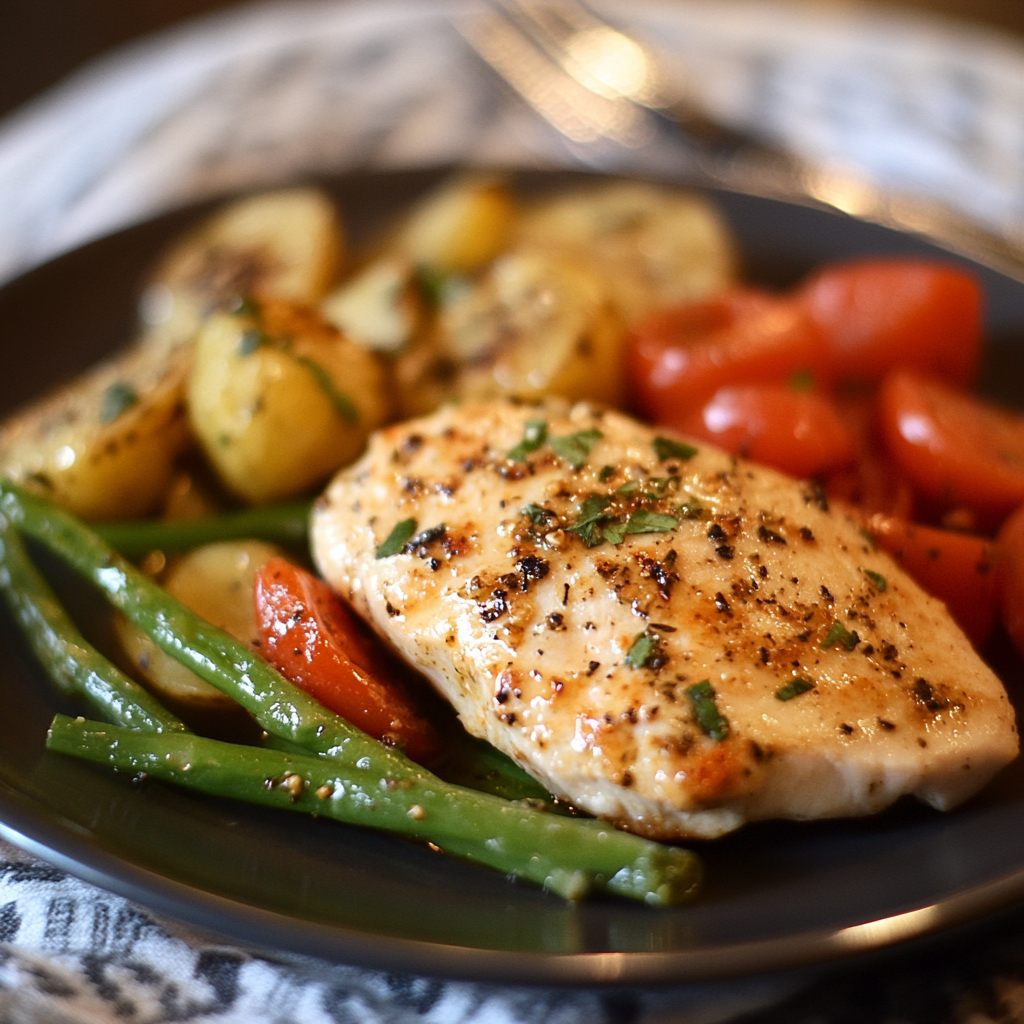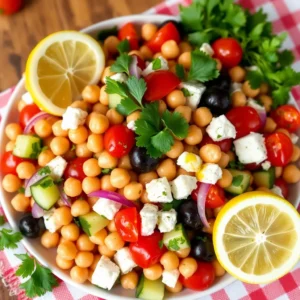Have you ever opened your fridge to find leftover chicken breast that’s as dry as the Sahara? Or maybe you’ve accidentally overcooked your chicken until it resembles something closer to cardboard than dinner? We’ve all been there, friend. As a home cook who’s had his fair share of kitchen mishaps, I’ve developed a foolproof method to revive dry chicken breast that will transform those sad, moisture-deprived pieces into something tender, juicy, and bursting with flavor.
Why You’ll Love This Dry Chicken Breast Revival Technique
This isn’t just another recipe—it’s a kitchen rescue mission! When you’ve spent good money on protein and time preparing it, the last thing you want is to throw it away. My simple method for reviving dry chicken breast works like magic for several reasons:
- It’s quick and takes less than 15 minutes from start to finish
- You probably already have all the ingredients in your pantry
- It’s extremely versatile and can be customized to any flavor profile
- The technique works for any type of cooked chicken (grilled, baked, or store-bought rotisserie)
- Your family will never guess they’re eating “saved” chicken
Plus, there’s something deeply satisfying about turning a potential food waste situation into a delicious meal that everyone loves. It’s like getting a second chance at dinner success!
The Science Behind Saving Dry Chicken
Before we dive into the recipe, let’s talk about why chicken gets dry in the first place. When chicken is overcooked, the proteins tighten up and squeeze out moisture, leaving you with that tough, chewy texture we all dread. But here’s the good news: we can reverse some of that damage!
By gently reheating the chicken in flavorful liquid, we allow it to absorb both moisture and taste. The thin slices or shreds provide more surface area for this absorption to happen. It’s not time travel (though sometimes it feels like it!), but it is food science working in your favor.
Ingredients You’ll Need to Revive Dry Chicken Breast
For this rescue mission (serves 2-4):
For the Chicken Revival Base:
- 2-3 dry cooked chicken breasts (about 1-1.5 pounds), sliced or shredded
- 1/2 cup chicken broth (or water in a pinch)
- 1 tablespoon olive oil
- 1 teaspoon garlic powder
- 1/2 teaspoon paprika or smoked paprika
- Salt and pepper to taste
Optional Flavor Boosters (choose your favorite):
- 1/4 cup barbecue sauce for a smoky-sweet profile
- 2 tablespoons teriyaki sauce for an Asian-inspired twist
- Fresh lemon juice (from half a lemon) for brightness
- 1 tablespoon Italian seasoning for Mediterranean flair
- 2 tablespoons buffalo sauce for a spicy kick
Step-by-Step Instructions to Breathe New Life Into Dry Chicken
Step 1: Prep Your Chicken
The first key to success is creating more surface area for flavor absorption. Take your dry chicken breasts and:
- Using a sharp knife, slice the chicken into thin, even pieces across the grain (about 1/4-inch thick)OR
- Use two forks to shred the chicken into smaller pieces
If your chicken is straight from the refrigerator, let it sit at room temperature for about 10 minutes before slicing. Cold chicken is harder to work with and more likely to tear rather than slice cleanly.
Step 2: Create Your Flavor Base
Now it’s time to build the rescue vehicle for your dry chicken:
- Heat a large skillet over medium heat
- Add your tablespoon of olive oil and swirl to coat the pan
- Once the oil is warm (but not smoking), pour in your chicken broth or water
- Sprinkle in the garlic powder, paprika, salt, and pepper, giving everything a quick stir
The liquid will start to bubble gently—this creates the steam that will help rehydrate your chicken while infusing it with flavor. Think of it as a flavor sauna for your sad chicken!
Step 3: The Rehydration Magic
This is where the transformation happens:
- Add your sliced or shredded chicken to the pan, spreading it out evenly
- Gently toss the chicken to coat it with the seasoned liquid
- Reduce the heat to low and cover the skillet with a lid
- Let the chicken simmer gently for 5-8 minutes, stirring occasionally
During this time, the chicken is slowly absorbing the flavorful liquid. If you notice the pan drying out too quickly, add a splash more broth. Remember, moisture is your friend in this process!
Step 4: Add Your Flavor Boost
Now it’s time to personalize your revived chicken:
- In the last 2 minutes of cooking, add your chosen flavor booster
- Stir gently to coat all the chicken pieces
- Let the sauce heat through and cling to the chicken
This step is where you can get creative based on what you’re craving or what you plan to use the chicken for. Want chicken for tacos? Add some taco seasoning and a splash of lime. Planning a pasta dish? Try Italian herbs and a touch of cream.
Step 5: Rest and Serve
Just like with freshly cooked chicken, a brief rest helps the juices redistribute:
- Remove the pan from heat
- Let the chicken rest for 1-2 minutes
- Give it one final toss in the remaining sauce
Your once-dry chicken is now ready to enjoy! The transformation is almost miraculous—from disappointing to delicious in less than 15 minutes.
Creative Ways to Use Your Newly Tender Chicken
Now that you’ve successfully revived your dry chicken breast, let’s talk about all the delicious ways you can use it! This is where the magic of this technique really shines—your rehydrated chicken becomes a versatile protein that works in countless dishes:
Quick Weeknight Meals
- Chicken Quesadillas: Stuff tortillas with your revived chicken, some cheese, and a sprinkle of taco seasoning for an easy dinner.
- Grain Bowls: Top a bowl of quinoa or brown rice with your flavorful chicken, roasted veggies, and a drizzle of tahini.
- 15-Minute Pasta: Toss your tender chicken with cooked pasta, a splash of olive oil, garlic, and whatever veggies you have on hand.
Meal Prep Champions
- Protein-Packed Salads: Store your revived chicken separately from greens and assemble fresh salads throughout the week.
- Chicken Wraps: Roll up your chicken with hummus, fresh veggies, and a whole grain wrap for portable lunches.
- Stuffed Sweet Potatoes: Split baked sweet potatoes and top with your chicken, black beans, and a dollop of Greek yogurt.
Just last week, I revived some dry chicken breasts from Sunday’s dinner and transformed them into three completely different meals throughout the week. My family had no idea they were eating the same base protein—they just knew dinner was delicious!
Pro Tips for Chicken Revival Success
After countless chicken rescue missions in my kitchen, I’ve picked up some wisdom to share:
The “Slice Thin” Secret
The thinner you slice your chicken, the more effectively it will absorb the flavors and moisture. Don’t worry about perfect slices—even irregular pieces will work as long as they’re thin.
The Broth Matters
While water works in a pinch, using broth adds an extra layer of flavor. I like to keep chicken bouillon cubes in my pantry for emergency flavor boosts. And if you’re feeling fancy, a splash of white wine in your broth takes things to a whole new level!
Don’t Crank the Heat
Low and slow is the name of the game here. High heat will just continue cooking your already-dry chicken, while gentle heat allows for moisture absorption without further protein tightening.
The “Double Sauce” Technique
Sometimes I use a two-stage sauce approach: first, rehydrate with a simple broth, then finish with a more concentrated sauce like pesto or curry. This creates chicken with flavor that goes all the way through, not just on the surface.
When All Else Fails, Butter Helps
If you’re dealing with particularly stubborn dry chicken, a tablespoon of butter added to your simmering liquid creates a rich emulsion that clings to the chicken beautifully. Not something I do every time, but it’s a fantastic trick for special occasions!
A Personal Chicken Rescue Story
I’ll never forget the time I was hosting my in-laws for dinner—talk about pressure! I’d prepared chicken breasts earlier in the day, but between cleaning the house and preparing sides, I completely lost track of time. When I finally remembered the chicken in the oven, it was… well, let’s just say it resembled chicken jerky more than a main course.
With just 30 minutes until their arrival, I panicked. Then I remembered this technique. I quickly sliced the chicken, simmered it in broth with garlic and herbs, and finished it with a lemon-butter sauce. Not only did dinner come together, but my mother-in-law actually asked for the recipe! I debated whether to tell her the truth but decided to share my “chicken revival secret.” Now it’s her go-to method for using up leftover rotisserie chicken!
Your Burning Questions About Reviving Dry Chicken Breast
Can I revive chicken that’s been in the fridge for several days?
Yes, but with some caveats. For food safety, only use chicken that’s been properly stored in the refrigerator for no more than 3-4 days. Make sure it passes the smell test (no off odors), and heat it thoroughly to an internal temperature of 165°F. The revival technique actually works wonderfully on refrigerated chicken since the cooling process can make chicken seem even drier.
Will this work with other meats like turkey or pork?
Absolutely! This rehydration technique works beautifully with any lean meat that’s become dry. Turkey breast is perhaps the most common alternative—especially useful after Thanksgiving! For pork tenderloin or loin chops, the process is identical. Just match your seasonings to complement the specific meat.
Can I freeze my revived chicken for later use?
While technically possible, I don’t recommend freezing chicken that’s already been cooked, revived, and reheated. The quality does diminish with each temperature cycle. Instead, focus on using your revived chicken within 2-3 days, stored properly in the refrigerator.
Beyond Rescue: Preventing Dry Chicken in the First Place
While this revival technique is a game-changer, the best strategy is preventing dry chicken in the first place. Here are my favorite preventative measures:
- Use a meat thermometer: Chicken breasts are perfectly cooked at 165°F—anything higher is just drying them out.
- Try the “reverse sear” method: Start chicken in a low oven (275°F) until it reaches 155°F internally, then finish with a quick sear in a hot pan.
- Explore brining: Even a quick 30-minute brine (1 tablespoon salt + 1 tablespoon sugar per cup of water) makes a world of difference.
- Consider sous vide cooking: If you have the equipment, sous vide chicken breasts are practically impossible to overcook.
For more detailed guidance on perfectly cooked chicken every time, check out my foolproof chicken cooking guide where I break down temperature, timing, and techniques.
Reducing Food Waste, One Chicken Breast at a Time
There’s something deeply satisfying about rescuing food from the trash bin. In our household, we’re conscious about minimizing food waste—not just to save money, but because it’s the right thing to do for our planet.
Learning to revive dry chicken breast isn’t just a culinary skill; it’s a small but meaningful contribution to sustainability. When you rescue that dry chicken, you’re also saving:
- The resources that went into raising that chicken
- The energy used in processing and transporting it
- The money from your grocery budget
- The time you originally invested in cooking it
For more ideas on reducing food waste in your kitchen, this comprehensive guide from the EPA offers excellent strategies that go beyond just saving leftover chicken.
Celebrate Your Kitchen Wins
Cooking isn’t always about perfection—sometimes it’s about creative problem-solving and making the best of what you have. When you successfully revive dry chicken breast into something delicious, that’s a genuine kitchen victory worth celebrating!
Remember that even the most experienced cooks have kitchen mishaps. The difference is in how we respond to them. With this revival technique in your culinary toolkit, dry chicken is no longer a disaster—it’s just an opportunity for a delicious comeback story.
So the next time you find yourself staring at disappointingly dry chicken, don’t reach for the takeout menu or the trash can. Reach for your skillet, some broth, and your favorite seasonings. In just 15 minutes, you’ll have turned a kitchen letdown into a satisfying meal that your family will love.
Happy cooking, and remember—in my kitchen and yours, there’s always room for second chances!
For more kitchen rescue techniques and creative ways to use leftovers, check out my ultimate guide to revamping leftovers and 10 sauces that can save any meal.



